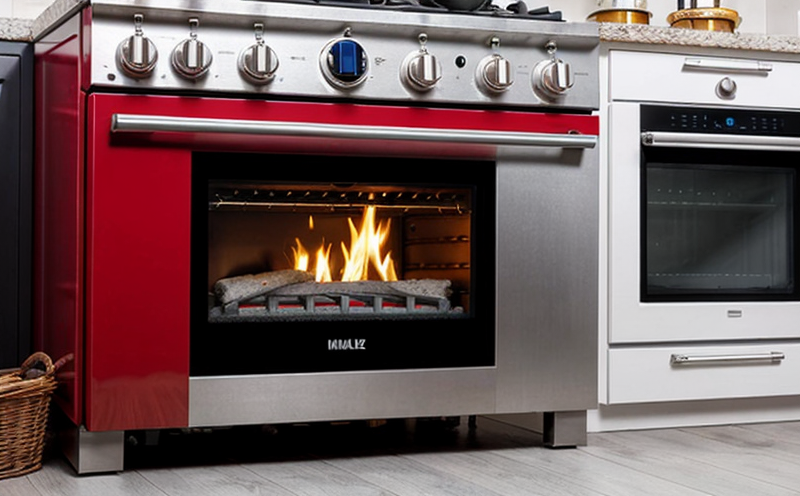Household Appliances Fire Safety Testing
Housing is one of the most essential aspects of modern life. Household appliances play a crucial role in enhancing the quality of our daily lives. However, their safety should never be compromised. Ensuring that these devices meet strict fire safety standards is paramount to protect consumers and prevent potential hazards. This article delves into the critical process of household appliance fire safety testing. Whether you are a manufacturer seeking compliance or an end-user looking for peace of mind, this section will provide insights into why it's essential.
The objective of household appliance fire safety tests is to determine whether appliances can withstand extreme temperatures and other conditions without igniting fires. The standards vary by region but generally adhere to international guidelines such as ISO 8069, which sets out the requirements for testing the fire resistance of household appliances.
For effective testing, it's crucial to consider both the design and materials used in manufacturing. The choice of components can significantly impact an appliance’s performance during a fire safety test. Manufacturers must ensure that all parts are made from flame-retardant materials. This includes not only the casing but also internal wiring, insulation, and any other elements exposed to high heat.
During testing, appliances undergo rigorous procedures designed to simulate real-world scenarios where they might be subjected to accidental fires or electrical faults. The tests aim at assessing various aspects including:
- The ability of the appliance to self-extinguish if ignited
- Potential for sparking during normal operation
- Heat dissipation efficiency under stress conditions
- Material integrity and structural stability when exposed to flames
A successful test ensures that the product complies with regulatory requirements, thereby enhancing consumer safety. Compliance also opens up markets by meeting specific national or international standards.
The importance of proper testing cannot be overstated. A single failure during a fire safety test can lead to costly recalls and damage to brand reputation. Therefore, it's vital for manufacturers to invest in reliable labs equipped with state-of-the-art equipment capable of simulating realistic environments where fires could occur.
Understanding the specific requirements for different types of household appliances is equally important. For instance, refrigerators have different challenges compared to stoves or washing machines due to their diverse functionalities and potential points of failure. Each appliance type requires tailored testing protocols that reflect its unique operational characteristics.
Industry Applications
- Manufacturing Compliance: Ensures products meet local and international standards for fire safety.
- R&D Support: Helps in identifying areas where improvements can be made to enhance product performance.
- Sales & Marketing: Provides a competitive edge by demonstrating commitment to high-quality, safe products.
- Insurance: Reduces liability risks associated with potential accidents involving household appliances.
The fire safety testing of household appliances extends beyond mere compliance; it serves as an essential tool for innovation and improvement. By understanding how different factors contribute to the overall performance of these devices, manufacturers can develop safer products that better serve consumer needs.
Moreover, industry applications go far beyond just manufacturing. Retailers benefit from knowing which brands adhere strictly to safety protocols, allowing them to offer more secure options to customers. Regulatory bodies gain confidence in enforcing rules effectively when they have access to accurate test results.
Why Choose This Test
Implementing rigorous fire safety tests for household appliances offers numerous benefits that extend well beyond mere compliance with regulations. Here are some compelling reasons why choosing such testing is crucial:
- Promotes Consumer Confidence: Knowing your favorite brand complies with stringent safety measures instills trust among consumers.
- Saves Lives & Prevents Injuries: By preventing fires and reducing the risk of injury, these tests save lives every year.
- Enhances Brand Reputation: Companies that prioritize fire safety are seen favorably by both stakeholders and customers alike.
- Avoids Legal Issues: Compliance reduces the likelihood of lawsuits related to product failures or accidents.
The benefits of thorough testing extend beyond just consumer protection; they also contribute significantly towards reducing overall societal costs associated with fire incidents. Fire safety tests help identify and rectify potential hazards early in the development process, minimizing the risk of more severe issues later on.
Furthermore, these tests encourage continuous improvement within the industry. As new challenges arise, manufacturers can adapt their designs based on feedback from rigorous testing procedures. This iterative approach ensures that products evolve alongside changing standards and technological advancements.
International Acceptance and Recognition
- Australia: Adheres to AS/NZS 4708:2013, which specifies the method for testing the fire resistance of household appliances.
- United States: Follows UL (Underwriters Laboratories) standards, particularly UL969 and UL1598E, focusing on flame retardancy and electrical safety.
- European Union: Implements EN 302 417-2, which outlines the procedures for testing fire resistance in various household appliance categories.
The global nature of trade means that compliance with international standards is increasingly important. Many countries recognize certifications from reputable organizations like Underwriters Laboratories (UL) and Intertek, ensuring compatibility across borders.
Compliance with these internationally recognized norms not only facilitates market access but also demonstrates a commitment to quality and safety. It fosters trust among consumers worldwide while reducing barriers to entry into new markets.
It's worth noting that some regions may have stricter regulations than others, requiring manufacturers to conduct additional testing or obtain specific certifications beyond the basic standards mentioned above.





